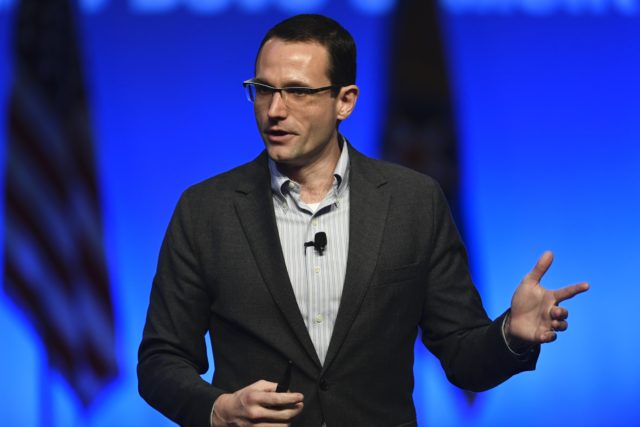
by Amy Christopherson
Air Force News Service
NATIONAL HARBOR, Md. — The world has changed and, to become a competitive acquisition system, the Air Force needs to change with it, said Dr. Will Roper, assistant secretary of the Air Force for acquisition, technology and logistics, at the Air Force Association’s 2019 Air, Space and Cyber Conference in National Harbor, Sept. 16.
“To become a more competitive acquisition system, the Air Force needs to be aware of trends in technology,” Roper said. “The world is changing. We have to change with it. The key is to decide which technology will be successful and being able to act on those trends with a system that is leaner, meaner and faster than our opponents.”
Roper said he notices three trends within Air Force acquisition that need to “go viral” if we want to function like a successful technology company —evolving at the speed of relevance.
Deft Air Force
The deft Air Force trend refers to speeding up the acquisition process, making it smarter and more agile. Section 804, an authority granted by Congress, allows the Air Force to accelerate that process and helps empower program managers to make acquisition decisions faster.
Air Force leadership set a goal of shaving 100 years off acquisition program timelines with the new authority and met that goal in less than a year.
“So we’ve reached a hundred years; that’s a great goal,” he said. “We’ll try to reach 150 by this time next year. It becomes harder and harder the longer we go…the difficult work of using the scalpel instead of the hatchet.”
Faster acquisition processes also mean expanded industry partnerships. Programs like Air Force Pitch Days allow the Air Force to award same-day contracts with small businesses, often going from contract award to paying a business within an average of 15 minutes. The Air Force plans to accomplish a total of 13 Pitch Days before the end of this year.
Innovation in sustainment is another key to building a deft Air Force. Predictive maintenance, or predicting aircraft part failures before they happen rather than responding when they do happen, is an example of improving the old way of doing business. Additionally, the Air Force is capitalizing on 3D printing to save time and money.
Digital Air Force
The next trend that needs to expand is digital Air Force — the way the service manages software development.
“If we don’t learn to do software well, then we’ve already lost,” he said. “Software is what binds everything together.”
Less than two years ago, the Air Force was still using a process called Waterfall, a cumbersome process which had been used since the 1970s. Recently, the Air Force started using Agile software development, an adaptive method of developing software that private companies use “allows continuously, smoothly and fluidly coding.”
Roper said when he came to the Air Force, he initially thought the coding challenge would be the hardest. But it hasn’t been.
He said the Air Force currently has amazing software programs, including Mad Hatter, Kessel Run, Bespins, Edge and every time he turns around there are more. There are currently 31 rapid coding organizations across the Air Force enterprise.
Finally, Roper announced that over the next 60 days, the Air Force will work to bring all software development environments into the Air Force cloud, called Cloud 1, to ensure software and data remain safe and secure.
“Security doesn’t mean you have to go slow,” he said. “In fact, the more secure you go, the faster you go.”
Disruptive Air Force
A disruptive Air Force spurs game-changing ideas.
“We should always be looking at game changing, warfighting ideas,” he said.
This trend means not only creating disruptive technology, but also creating technologies disruptively. He said it means not just creating the technology, but technology that changes how to build the new technologies.
“The idea of constantly building, cycling, incorporating new technologies, upgrading because we don’t know what the future adversary will bring and therefore our cycle time is our ultimate weapon,” he said. “I think that’s achievable. If you’re here from industry and you’re not invested in this technology — invest. If you’re a program manager and you’re not smart on it — learn. If you’re an operator I ask that you learn as well because we’re going to need to talk with you about how these programs might work.
“If we can harness this, speed up the clock and keep those three hashtags trending until they become viral, we’ll have shifted to the next gear in acquisition and be moving in the right direction to be competitive over time.”


